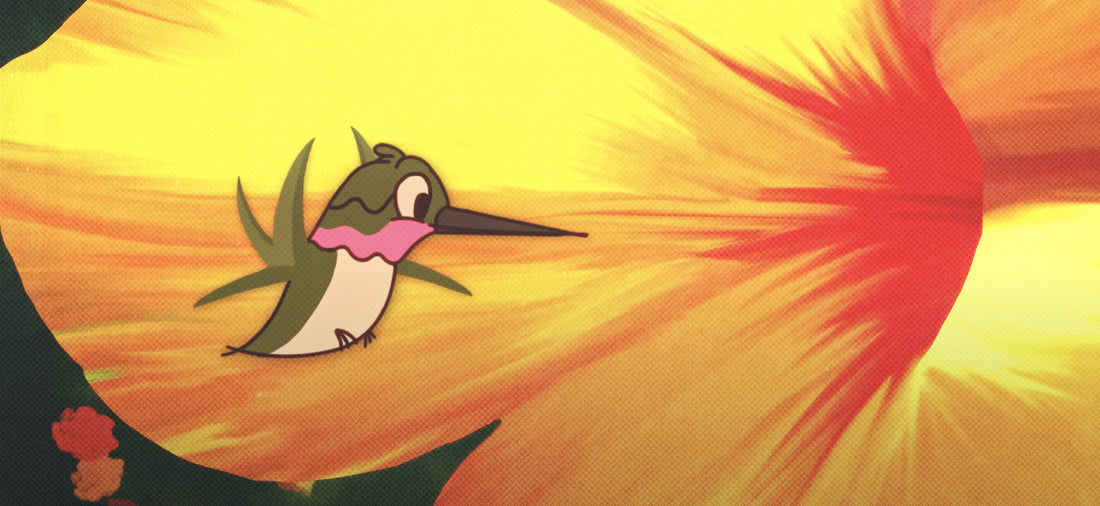Here at Margrette Bird Pictures, our feathered friends are a huge source of inspiration, especially the hummingbirds. We’ve gotten to know our group of local hummers over the years, and get a kick out of watching them buzz around the balcony, chirping and singing to us all day long.
As Spring temperatures start heating up, it's sadly not uncommon to begin seeing hummingbirds who are experiencing respiratory distress caused by a fungal overgrowth. This is always very upsetting, and alarming for bird lovers alike to witness. Knowing what causes this, dirty feeders and rancid nectar, we work hard to keep our feeders clean and fresh. –but unfortunately, living in the middle of Los Angeles, we can not control the cleanliness of the other area feeders that our bird friends may be sipping from throughout the day.
About three years ago, we had one little hummer show up who was in a very, very bad way. It was gut wrenching to watch his little body heave up and down so desperately as he gasped for air. I felt helpless, heartbroken and angry. A day later another of our regulars started showing early signs of respiratory illness, too. What on earth could I do to help them? I scoured Google trying to find any sort of information on what to do, but I hit a wall of nothingness. – no solutions. "Hopeless," said the internet. –but I had to at least try something, right?
Growing up, my family had lots of different kinds of pets. Dogs, frogs, cats, horses, rabbits, hamsters, fish, snails, turtles and even birds for a time. We had Cocktails, LoveBirds and Conures. I didn’t know why he did it, but that little voice inside reminded me that my Dad sometimes had to give the birds an antifungal treatment. So, taking a leap of faith, I began administering very small amounts of avian friendly antifungal powder, and raw apple cider vinegar to our sick hummingbirds.
Luckily, at the time, the patients had quarantined themselves to one particular feeder, away from the other birds, so it was easy to (mostly) control what nectar they were consuming.
I am not a Veterinarian, and I understand an experiment conducted on gut instinct may be controversial, but it worked. The mixture has a slight yellow tinge, smells like apple juice, and my hummers drink it right up, happily.
Now, anytime we suspect a bird may be under the weather, or if we have an influx of visitors (migratory birds), I add a pinch of anti-fungal to the nectar. When caught early, our birds bounce right back, showing no signs of respiratory distress after a day or two of treatment.
Since the success of this experiment, I now add a small amount of apple cider vinegar to my daily 1:3 nectar mix. This seems to be acting as a preventative for our local birds, and it also has the added benefit of helping keep the nectar from turning murky in the sunlight.
Again, I know this method may be controversial, so please use your own discernment, but I went with my gut on this one, and so far it has benefited our birds tremendously. I can only hope that this information may help someone else’s hummingbirds, too.
-Mallory

My Medicinal Recipe
- 1:3 Sugar Water Mix (I typically make 3 cups at a time)
- 1 Pinch Nystatin Antifungal Powder from Birdpal
- ¼ tsp Bragg's Raw Apple Cider Vinegar
My Everyday Antifungal Recipe
- 1:3 Sugar Water Mix
- ¼ tsp Bragg's Raw Apple Cider Vinegar
For information on calculating proper sugar water ratios as recommended by the LSU Museum of Natural Science click here.



